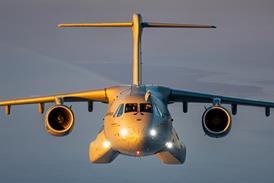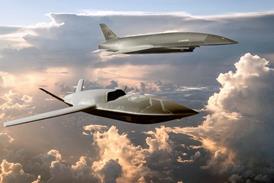Silicon/hydrogen compounds known as silanes are being investigated as possible liquid fuels for supersonic-combustion ramjets (scramjets), according to researchers at the University of Rome's department of mechanical engineering and aeronautics.
NASA's scramjet-powered X-43A hypersonic experimental vehicle, which reached Mach 9.86 last year, was fuelled by gaseous hydrogen. But despite its high combustion efficiency, hydrogen has a low density and must be stored at cryogenic temperatures, causing handling problems. Silanes can be transported and pumped like kerosene.
Researchers found the specific impulse, or efficiency, of a silane-fuelled scramjet was better than that of a gaseous hydrogen engine. "I know it's better than hydrogen, but I don't know how it compares to kerosene," says silane fuel project member and aeronautical researcher Antonella Ingenito.
The next stage is to examine the engineering issues involved with diverting the gaseous silicon separated from the hydrogen during the engine's combustion process.
Results of the silane fuel paper study, started last October, were presented at the American Institute of Aeronautics and Astronautics' 13th international spaceplanes and hypersonics conference at the Italian aerospace research agency CIRA in Naples this month.
ROB COPPINGER/NAPLES
Source: Flight International


























